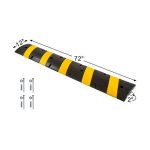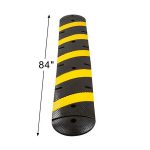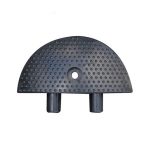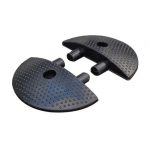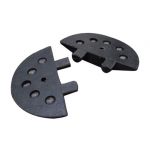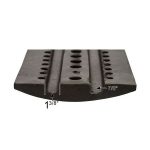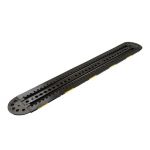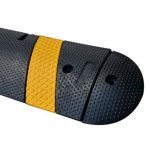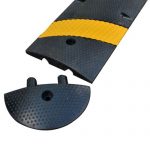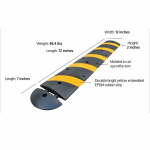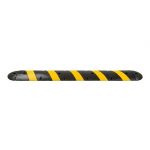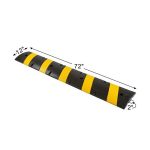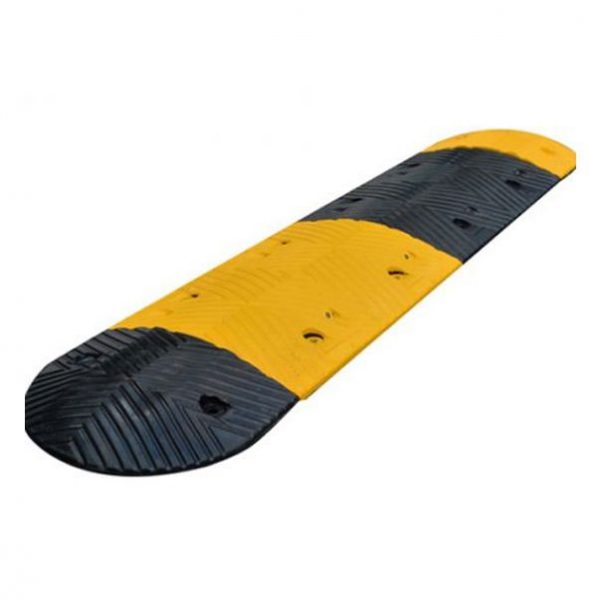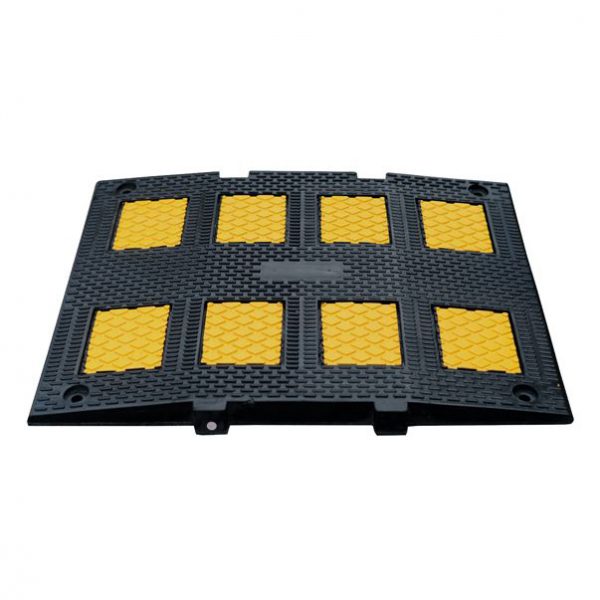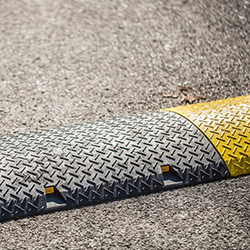Speed control bumps are an effective way to slow down traffic on residential streets. They are small bumps in the road that require drivers to slow down to prevent their vehicles from jolting. These bumps act as a physical reminder for drivers to obey the speed limit and reduce the risk of speeding. In addition to providing a visual cue to slow down, the bumps also have a psychological effect that encourages drivers to be more aware of their speed.
Not only do speed control bumps reduce the risk of speeding, but they also decrease the wear and tear on vehicles caused by excessive speed. By slowing down traffic, drivers are able to more easily avoid potholes and other imperfections in the road that can cause damage to cars.
When used correctly, speed control bumps can be an effective way to improve safety on residential streets. They provide a visual reminder to drivers of the speed limit, encourage them to pay closer attention to the road, and reduce the risk of damages caused by excessive speed.
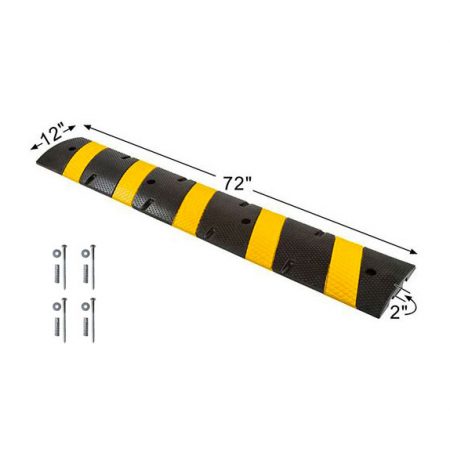
# Introduction
Speed control bumps are an effective and increasingly popular tool used to make roads safer and more accessible for everyone. Speed control bumps are small bumps in the road that require drivers to slow down to prevent their vehicles from jolting. This helps reduce the risk of speeding, reduces wear and tear on vehicles, and encourages drivers to be more aware of their speed.
Speed control bumps have many advantages over traditional speed limit signs. While speed limit signs can be easily ignored or misinterpreted, speed control bumps require drivers to physically slow down and pay attention. This physical act of slowing down helps drivers become more aware of the speed limit, and can create a psychological effect that encourages drivers to be more mindful of their speed in the future.
Speed control bumps are also cost-effective and easy to install and maintain. Most installations only require a short period of time, and the maintenance can be done as needed. Plus, speed control bumps are environmentally friendly and use recycled materials that are built to last.
The benefits of speed control bumps are clear: they provide a visual cue to slow down, they have a psychological effect that encourages drivers to be more aware of their speed, and they reduce the risk of speeding and the wear and tear on vehicles. Speed control bumps are an effective way to improve road safety for everyone.

– Definition of speed control bumps
Speed control bumps, also known as speed bumps or humps, are small bumps that are installed on roads and highways in order to slow down the speed of vehicles. These bumps are typically made of asphalt or concrete and range in height from
0.5 inches to 3 inches. They are usually placed in a straight line along the center of the road, though they can also be placed in other configurations, such as at intersections or along curves.
When a vehicle drives over a speed control bump, its driver must slow down in order to prevent their car from jolting. This physical reminder encourages drivers to obey the speed limit, thereby reducing the risk of speeding. In addition to providing a visual cue to slow down, the bumps also have a psychological effect that encourages drivers to be more aware of their speed.
Speed control bumps can also be used to reduce wear and tear on vehicles caused by excessive speed. By slowing the vehicles down, these bumps can reduce the amount of stress placed on the suspension, brakes, and tires, thereby prolonging the life of the vehicle.
Speed control bumps are usually installed with a raised plate in the center to make them more visible to drivers. These plates can be made of metal, plastic, or rubber and come in a variety of colors. They are designed to make the bumps stand out from the road, so drivers can easily identify them.
Speed control bumps can also be customized to suit the needs of a particular area. Different sizes, shapes, and materials can be used to create a unique look and feel for the bumps. This allows for increased flexibility in the design and installation process.
The installation and maintenance of speed control bumps is relatively straightforward and cost-effective. With the right tools and materials, these bumps can be quickly and easily installed and maintained by individuals or maintenance crews. Additionally, they are an environmentally friendly solution, as they do not require any additional chemicals or pollutants to be released into the atmosphere.
Overall, speed control bumps are an effective way to slow down traffic on residential streets, intersections, and other high-traffic areas. Not only do they provide a physical and psychological reminder to drivers to slow down, but they also help to reduce the risk of speeding and wear and tear on vehicles.
– Benefits of speed control bumps
Speed control bumps can be seen as a highly effective way to slow down traffic on residential streets. Not only do they provide a physical reminder to drivers to obey the speed limit, but they also have a psychological effect that encourages drivers to be more aware of their speed. As a result, the risk of speeding is greatly reduced.
In addition to providing a safer driving environment, speed control bumps can also help to reduce the wear and tear on vehicles caused by excessive speed. By forcing drivers to slow down, the bumps reduce the strain on vehicles, which can result in a decrease in maintenance costs and a longer life for the vehicle.
Speed control bumps are also beneficial in that they are a cost-effective solution. Unlike fixed speed limit signs, the bumps require minimal maintenance and are easy to install. They are also an environmentally friendly option, as they require no electricity and are made of materials that are not toxic to the environment.
Moreover, the installation of speed control bumps does not require the disruption of traffic. Because the bumps are small and only require minimal preparation of the surface, they can be installed quickly and easily without disrupting the flow of traffic. Additionally, the bumps are designed to be durable and require little maintenance.
Finally, speed control bumps can be used in various locations, including residential streets, intersections, and high-traffic areas. This makes them an ideal solution for any area where traffic needs to be slowed down. In addition, the bumps can be customized to meet the needs of the area in which they are installed, such as the size of the bumps and the depth of the indentations.
In conclusion, speed control bumps are an effective way to slow down traffic and improve road safety. They are cost-effective, easy to install, and require minimal maintenance. Furthermore, they can be installed in various locations and can be customized to meet the needs of the area. As a result, speed control bumps are a great way to ensure a safe driving environment.
– Explanation of the visual and psychological effects of speed control bumps
Speed control bumps are an effective visual cue for drivers to reduce their speed. When a driver sees the bumps in the road, it is a reminder for them to slow down and obey the speed limit. The bumps are small, but they are large enough to be noticed. In addition to being a visual reminder, the bumps also have a psychological effect. Drivers become more aware of their speed when they see the bumps and are more likely to slow down.
Speed control bumps are beneficial for reducing the risk of speeding. They act as a physical reminder for drivers to slow down and they also encourage drivers to be more conscious of their speed. This helps to ensure that drivers are obeying the speed limit and reduces the risk of accidents caused by speeding or reckless driving.
In addition to reducing the risk of speeding, speed control bumps also help to decrease the wear and tear on vehicles caused by excessive speed. When vehicles speed over the bumps, they are forced to slow down and reduce their speed. This prevents drivers from going too fast and helps to reduce the amount of damage caused to the vehicle from excessive speed.
Speed control bumps are also beneficial for improving driver awareness. The bumps act as a physical reminder for drivers to pay attention to their speed and to be more conscious of their driving. This helps to reduce the risk of accidents by encouraging drivers to pay attention to their speed and to obey the speed limit.
Overall, speed control bumps are an effective way to reduce the risk of speeding and improve road safety. The visual cues of the bumps serve as a reminder for drivers to slow down and obey the speed limit, while the psychological effects help to increase driver awareness. In addition, speed control bumps help to reduce the wear and tear on vehicles caused by excessive speed.
How Speed Control Bumps Can Improve Road Safety
# Introduction
Speed control bumps are an effective and increasingly popular tool used to make roads safer and more accessible for everyone. Speed control bumps are small bumps in the road that require drivers to slow down to prevent their vehicles from jolting. This helps reduce the risk of speeding, reduces wear and tear on vehicles, and encourages drivers to be more aware of their speed.
Speed control bumps have many advantages over traditional speed limit signs. While speed limit signs can be easily ignored or misinterpreted, speed control bumps require drivers to physically slow down and pay attention. This physical act of slowing down helps drivers become more aware of the speed limit, and can create a psychological effect that encourages drivers to be more mindful of their speed in the future.
Speed control bumps are also cost-effective and easy to install and maintain. Most installations only require a short period of time, and the maintenance can be done as needed. Plus, speed control bumps are environmentally friendly and use recycled materials that are built to last.
The benefits of speed control bumps are clear: they provide a visual cue to slow down, they have a psychological effect that encourages drivers to be more aware of their speed, and they reduce the risk of speeding and the wear and tear on vehicles. Speed control bumps are an effective way to improve road safety for everyone.
– Definition of speed control bumps
Speed control bumps, also known as speed bumps or humps, are small bumps that are installed on roads and highways in order to slow down the speed of vehicles. These bumps are typically made of asphalt or concrete and range in height from
0.5 inches to 3 inches. They are usually placed in a straight line along the center of the road, though they can also be placed in other configurations, such as at intersections or along curves.
When a vehicle drives over a speed control bump, its driver must slow down in order to prevent their car from jolting. This physical reminder encourages drivers to obey the speed limit, thereby reducing the risk of speeding. In addition to providing a visual cue to slow down, the bumps also have a psychological effect that encourages drivers to be more aware of their speed.
Speed control bumps can also be used to reduce wear and tear on vehicles caused by excessive speed. By slowing the vehicles down, these bumps can reduce the amount of stress placed on the suspension, brakes, and tires, thereby prolonging the life of the vehicle.
Speed control bumps are usually installed with a raised plate in the center to make them more visible to drivers. These plates can be made of metal, plastic, or rubber and come in a variety of colors. They are designed to make the bumps stand out from the road, so drivers can easily identify them.
Speed control bumps can also be customized to suit the needs of a particular area. Different sizes, shapes, and materials can be used to create a unique look and feel for the bumps. This allows for increased flexibility in the design and installation process.
The installation and maintenance of speed control bumps is relatively straightforward and cost-effective. With the right tools and materials, these bumps can be quickly and easily installed and maintained by individuals or maintenance crews. Additionally, they are an environmentally friendly solution, as they do not require any additional chemicals or pollutants to be released into the atmosphere.
Overall, speed control bumps are an effective way to slow down traffic on residential streets, intersections, and other high-traffic areas. Not only do they provide a physical and psychological reminder to drivers to slow down, but they also help to reduce the risk of speeding and wear and tear on vehicles.
– Benefits of speed control bumps
Speed control bumps can be seen as a highly effective way to slow down traffic on residential streets. Not only do they provide a physical reminder to drivers to obey the speed limit, but they also have a psychological effect that encourages drivers to be more aware of their speed. As a result, the risk of speeding is greatly reduced.
In addition to providing a safer driving environment, speed control bumps can also help to reduce the wear and tear on vehicles caused by excessive speed. By forcing drivers to slow down, the bumps reduce the strain on vehicles, which can result in a decrease in maintenance costs and a longer life for the vehicle.
Speed control bumps are also beneficial in that they are a cost-effective solution. Unlike fixed speed limit signs, the bumps require minimal maintenance and are easy to install. They are also an environmentally friendly option, as they require no electricity and are made of materials that are not toxic to the environment.
Moreover, the installation of speed control bumps does not require the disruption of traffic. Because the bumps are small and only require minimal preparation of the surface, they can be installed quickly and easily without disrupting the flow of traffic. Additionally, the bumps are designed to be durable and require little maintenance.
Finally, speed control bumps can be used in various locations, including residential streets, intersections, and high-traffic areas. This makes them an ideal solution for any area where traffic needs to be slowed down. In addition, the bumps can be customized to meet the needs of the area in which they are installed, such as the size of the bumps and the depth of the indentations.
In conclusion, speed control bumps are an effective way to slow down traffic and improve road safety. They are cost-effective, easy to install, and require minimal maintenance. Furthermore, they can be installed in various locations and can be customized to meet the needs of the area. As a result, speed control bumps are a great way to ensure a safe driving environment.
– Explanation of the visual and psychological effects of speed control bumps
Speed control bumps are an effective visual cue for drivers to reduce their speed. When a driver sees the bumps in the road, it is a reminder for them to slow down and obey the speed limit. The bumps are small, but they are large enough to be noticed. In addition to being a visual reminder, the bumps also have a psychological effect. Drivers become more aware of their speed when they see the bumps and are more likely to slow down.
Speed control bumps are beneficial for reducing the risk of speeding. They act as a physical reminder for drivers to slow down and they also encourage drivers to be more conscious of their speed. This helps to ensure that drivers are obeying the speed limit and reduces the risk of accidents caused by speeding or reckless driving.
In addition to reducing the risk of speeding, speed control bumps also help to decrease the wear and tear on vehicles caused by excessive speed. When vehicles speed over the bumps, they are forced to slow down and reduce their speed. This prevents drivers from going too fast and helps to reduce the amount of damage caused to the vehicle from excessive speed.
Speed control bumps are also beneficial for improving driver awareness. The bumps act as a physical reminder for drivers to pay attention to their speed and to be more conscious of their driving. This helps to reduce the risk of accidents by encouraging drivers to pay attention to their speed and to obey the speed limit.
Overall, speed control bumps are an effective way to reduce the risk of speeding and improve road safety. The visual cues of the bumps serve as a reminder for drivers to slow down and obey the speed limit, while the psychological effects help to increase driver awareness. In addition, speed control bumps help to reduce the wear and tear on vehicles caused by excessive speed.

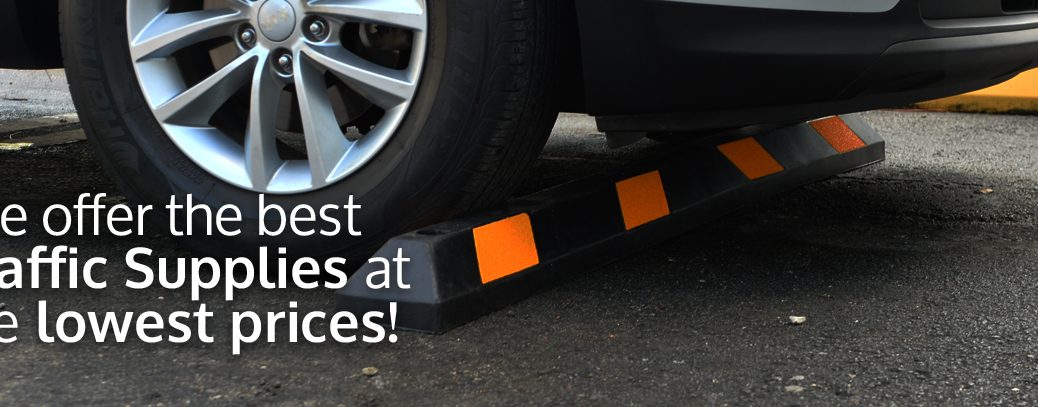


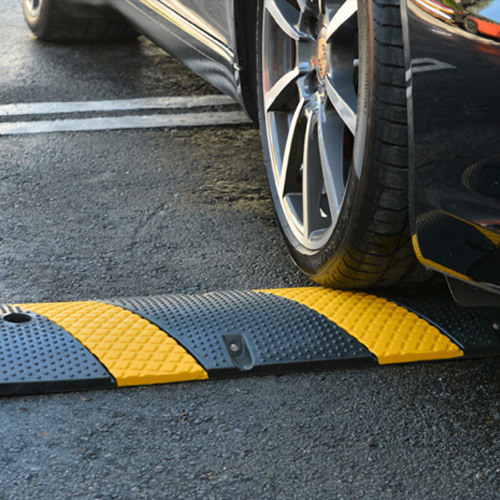
 Asphalt
Asphalt Concrete
Concrete
